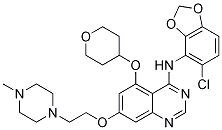Clinically, brain metastases most commonly arise from lung, breast, and melano-carcinomas. The major requirements for metastasis to distant sites appear to vary by organ and remain incompletely understood. The pathophysiology of brain metastasis, in particular, remains elusive. In metastasis to lung and bone, characteristic patterns of gene expression in MDA-MB-231derived mammary carcinoma cells  have been shown to enable organ specific colonization. Such factors have not yet been identified for brain metastasis, but are likely to exist as mouse and human carcinoma lines have been selected for increased brain colonization. However, these characterizations of the “seed” largely neglect contributions from the “soil” and appear to be cell line specific. On the other hand, there is a persistent assumption in the literature that brain metastasis is the result of specific interactions with the neural elements of the brain parenchyma mediating “brain homing”, direct cell attachment and establishment, invasion, and progressive growth into micro- and macrometastases. These ideas are certainly consistent with the classic concept of Pagetian “soil”, however, there currently exist no in vivo data to support such statements and indeed very few studies address these topics directly. In contrast, we have noted many experimental brain metastasis studies dating back several decades have anecdotally described early growth of tumor cells along pre-existing brain vessels. This relationship is reminiscent of vascular cooption described in a rat glioma model. These findings suggest the neural elements of the brain parenchyma do not provide a sufficient substrate for metastatic carcinoma growth and instead implicates the existing neurovasculature as a key niche for malignant progression. This also supports the data by Fidler and colleagues that suggests sprouting neoangiogenesis may not be necessary for the initiation of metastasis growth in the brain. Here, we used a combination of in vitro and in vivo studies and human pathological specimens to analyze the temporospatial growth pattern of brain metastasis microcolonies in order to characterize the relationship between metastatic tumor cells and the existing neurovasculature. We focused on timepoints as early as 3d after intravascular injection in order to focus on the earliest events in microcolony formation. We found that brain micrometastases in mouse and human tissue utilized vascular cooption for growth rather than invading and growing Diperodon within the neural parenchyma. Vascular cooption can be an alternative to neoangiogenesis and likely acts to deliver blood borne nutrients and oxygen. We propose here that vascular cooption has an additional function for brain metastases; interactions with the pre-existing vessels are required for initial adhesion, proliferation, invasion, and microcolony establishment. We show that the neural parenchyma of the brain cannot substitute in supplying these functions. This work identifies the central role of the vasculature for metastatic growth in the CNS as well as providing insight into the mechanism of Ginsenoside-Ro adhesive vascular cooption. These novel concepts may allow the development of more effective therapies for brain metastasis. To characterize the vascular association of tumor cells in experimental brain metastasis models, we examined early brain microcolony formation after intracardiac injection of metastatic mouse and human tumor cells.
have been shown to enable organ specific colonization. Such factors have not yet been identified for brain metastasis, but are likely to exist as mouse and human carcinoma lines have been selected for increased brain colonization. However, these characterizations of the “seed” largely neglect contributions from the “soil” and appear to be cell line specific. On the other hand, there is a persistent assumption in the literature that brain metastasis is the result of specific interactions with the neural elements of the brain parenchyma mediating “brain homing”, direct cell attachment and establishment, invasion, and progressive growth into micro- and macrometastases. These ideas are certainly consistent with the classic concept of Pagetian “soil”, however, there currently exist no in vivo data to support such statements and indeed very few studies address these topics directly. In contrast, we have noted many experimental brain metastasis studies dating back several decades have anecdotally described early growth of tumor cells along pre-existing brain vessels. This relationship is reminiscent of vascular cooption described in a rat glioma model. These findings suggest the neural elements of the brain parenchyma do not provide a sufficient substrate for metastatic carcinoma growth and instead implicates the existing neurovasculature as a key niche for malignant progression. This also supports the data by Fidler and colleagues that suggests sprouting neoangiogenesis may not be necessary for the initiation of metastasis growth in the brain. Here, we used a combination of in vitro and in vivo studies and human pathological specimens to analyze the temporospatial growth pattern of brain metastasis microcolonies in order to characterize the relationship between metastatic tumor cells and the existing neurovasculature. We focused on timepoints as early as 3d after intravascular injection in order to focus on the earliest events in microcolony formation. We found that brain micrometastases in mouse and human tissue utilized vascular cooption for growth rather than invading and growing Diperodon within the neural parenchyma. Vascular cooption can be an alternative to neoangiogenesis and likely acts to deliver blood borne nutrients and oxygen. We propose here that vascular cooption has an additional function for brain metastases; interactions with the pre-existing vessels are required for initial adhesion, proliferation, invasion, and microcolony establishment. We show that the neural parenchyma of the brain cannot substitute in supplying these functions. This work identifies the central role of the vasculature for metastatic growth in the CNS as well as providing insight into the mechanism of Ginsenoside-Ro adhesive vascular cooption. These novel concepts may allow the development of more effective therapies for brain metastasis. To characterize the vascular association of tumor cells in experimental brain metastasis models, we examined early brain microcolony formation after intracardiac injection of metastatic mouse and human tumor cells.
further characterization of these mechanisms and identification of new strategies for treatment
Leave a reply